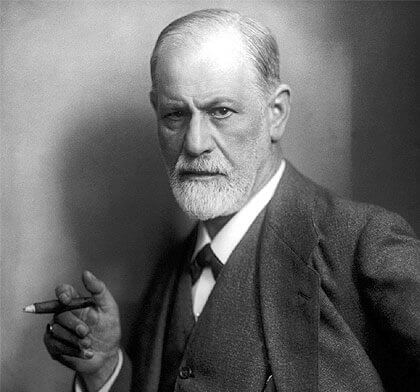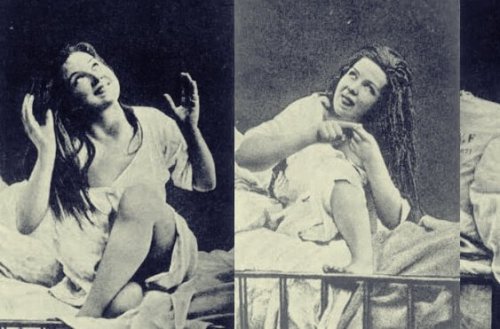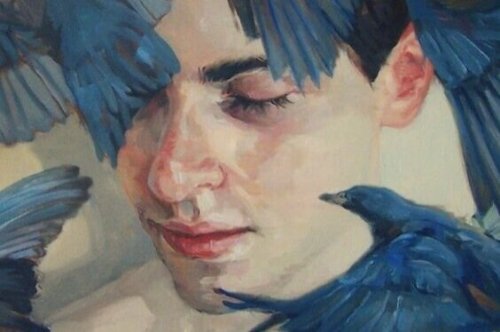Male Hysteria: Does It Truly Exist?


Written and verified by the psychologist Valeria Sabater
The concept of “hysteria” has radically changed over the years. It’s evolved into other different diagnoses. During the 19th century, it became a frequent diagnosis, especially in women. Back in the day, Freud’s mentor, Jean-Martin Charcot, described very clear cases of male hysteria in order to “de-feminize” this condition.
It used to be common to sexualize certain things such as mental disorders. For a long time, many believed that things such as instability, emotional effusiveness, nervousness, migraines, abdominal pains, and decay were exclusive to women.
Everyone overlooked the fact that, in 1886, Sigmund Freud tried to convince the Medical Association of Vienna of the existence of male hysteria. In fact, Freud himself created a defined clinical picture of it. However, none of his colleagues accepted that diagnostic dimension inherited from Hippocrates; which originally referred to how, supposedly, the female womb altered women’s behavior and will.
Parting from that statement, it makes sense that it was difficult for them to understand that men could suffer from the same nervous alterations, somatizations, and dissociative behaviors as women. Nonetheless, it seems that male hysteria actually existed and still does to this day. However, other (more adjusted) clinical pictures explain this set of symptoms now.

The History of Hysteria or Passionate Pain
The European Neurology magazine published a study that some researchers at the University of Toronto conducted. They explained that the concept of “hysteria” has existed for more than four thousand years. Some Egyptian papyri speak of the “warring uterus” phenomenon and how this organ could reach a woman’s throat if they were very passionate and suffered from sexual deprivation.
The first historical reference of male hysteria appeared in a William Shakespeare play. King Lear himself defined his affliction as a passionate pain produced by hysteria. Then, Jean-Martin Charcot focused on it between 1865 and 1893.
In order to carry out his work, he relied on the work of some of his colleagues such as Paul Briquet’s Traité clinique et thérapeutique de l’hystérie. He didn’t explain the relationship between hysteria and the uterus. Instead, Dr. Briquet stated that hysteria was a mental disorder with a cerebral origin. He defined it as “brain neurosis” that affected both men and women equally.

The Characteristics of Male Hysteria
Charcot and Freud strived to be impartial in describing the symptomatology of hysteria. Neither of them sought to differentiate female hysteria from male hysteria. However, most people had a different concept. Hysterical women, for example, showed highly emotional and passionate behaviors, as well as sexually deviant behaviors. Therefore, male hysteria attributed the most stereotyped feminine traits to the male gender. For example, sensitivity, mood swings, and effeminate attitudes.
In the 19th century, it was common to believe that male hysteria could cause anxiety. This anxiety would manifest for not exteriorizing those “masculine” attitudes and roles so highly demanded by society. Now, from a clinical and objective standpoint, Charcot defined male hysteria as follows:
- Neither male nor female hysteria is related to sexual issues.
- Patients would either show extreme behaviors or extreme mutism and repression. Some of them wouldn’t move or eat at all. These extreme emotional changes would always manifest right after a critical event, such as accidents and serious falls. They’d also manifest due to alcoholism.
We must note that Charcot didn’t believe there were any differences between female and male hysteria. Later on, Sigmund Freud delved into the concept of trauma. However, he preferred to focus on female hysteria at all times.

From Male Hysteria to Post-Traumatic Stress Disorder
Those who have read the book Mrs. Dalloway by Virginia Woolf have definitely heard about male hysteria. In this 1925 novel, Woolf describes this term by associating it with a more adjusted idea, from a clinical standpoint.
She used it to describe traumatized men who returned from war. In fact, people started using the term precisely as a result of these situations, in which thousands of young people returned from war without being able to react to anything.
Little by little, the term hysteria has changed in order to adjust to clinical realities where neurosis, conversion disorder, or post-traumatic stress disorder give a better idea of this symptomatology that both men and women can suffer from. However, to this day, there are still traces of that pejorative and misogynistic categorization.
To conclude, it’s worth noting the great changes that this term has experimented. After all, under that female and male hysteria, lies the incapability of assimilating a trauma and an individual who doesn’t know how to channel their anxiety the right way.
The concept of “hysteria” has radically changed over the years. It’s evolved into other different diagnoses. During the 19th century, it became a frequent diagnosis, especially in women. Back in the day, Freud’s mentor, Jean-Martin Charcot, described very clear cases of male hysteria in order to “de-feminize” this condition.
It used to be common to sexualize certain things such as mental disorders. For a long time, many believed that things such as instability, emotional effusiveness, nervousness, migraines, abdominal pains, and decay were exclusive to women.
Everyone overlooked the fact that, in 1886, Sigmund Freud tried to convince the Medical Association of Vienna of the existence of male hysteria. In fact, Freud himself created a defined clinical picture of it. However, none of his colleagues accepted that diagnostic dimension inherited from Hippocrates; which originally referred to how, supposedly, the female womb altered women’s behavior and will.
Parting from that statement, it makes sense that it was difficult for them to understand that men could suffer from the same nervous alterations, somatizations, and dissociative behaviors as women. Nonetheless, it seems that male hysteria actually existed and still does to this day. However, other (more adjusted) clinical pictures explain this set of symptoms now.

The History of Hysteria or Passionate Pain
The European Neurology magazine published a study that some researchers at the University of Toronto conducted. They explained that the concept of “hysteria” has existed for more than four thousand years. Some Egyptian papyri speak of the “warring uterus” phenomenon and how this organ could reach a woman’s throat if they were very passionate and suffered from sexual deprivation.
The first historical reference of male hysteria appeared in a William Shakespeare play. King Lear himself defined his affliction as a passionate pain produced by hysteria. Then, Jean-Martin Charcot focused on it between 1865 and 1893.
In order to carry out his work, he relied on the work of some of his colleagues such as Paul Briquet’s Traité clinique et thérapeutique de l’hystérie. He didn’t explain the relationship between hysteria and the uterus. Instead, Dr. Briquet stated that hysteria was a mental disorder with a cerebral origin. He defined it as “brain neurosis” that affected both men and women equally.

The Characteristics of Male Hysteria
Charcot and Freud strived to be impartial in describing the symptomatology of hysteria. Neither of them sought to differentiate female hysteria from male hysteria. However, most people had a different concept. Hysterical women, for example, showed highly emotional and passionate behaviors, as well as sexually deviant behaviors. Therefore, male hysteria attributed the most stereotyped feminine traits to the male gender. For example, sensitivity, mood swings, and effeminate attitudes.
In the 19th century, it was common to believe that male hysteria could cause anxiety. This anxiety would manifest for not exteriorizing those “masculine” attitudes and roles so highly demanded by society. Now, from a clinical and objective standpoint, Charcot defined male hysteria as follows:
- Neither male nor female hysteria is related to sexual issues.
- Patients would either show extreme behaviors or extreme mutism and repression. Some of them wouldn’t move or eat at all. These extreme emotional changes would always manifest right after a critical event, such as accidents and serious falls. They’d also manifest due to alcoholism.
We must note that Charcot didn’t believe there were any differences between female and male hysteria. Later on, Sigmund Freud delved into the concept of trauma. However, he preferred to focus on female hysteria at all times.

From Male Hysteria to Post-Traumatic Stress Disorder
Those who have read the book Mrs. Dalloway by Virginia Woolf have definitely heard about male hysteria. In this 1925 novel, Woolf describes this term by associating it with a more adjusted idea, from a clinical standpoint.
She used it to describe traumatized men who returned from war. In fact, people started using the term precisely as a result of these situations, in which thousands of young people returned from war without being able to react to anything.
Little by little, the term hysteria has changed in order to adjust to clinical realities where neurosis, conversion disorder, or post-traumatic stress disorder give a better idea of this symptomatology that both men and women can suffer from. However, to this day, there are still traces of that pejorative and misogynistic categorization.
To conclude, it’s worth noting the great changes that this term has experimented. After all, under that female and male hysteria, lies the incapability of assimilating a trauma and an individual who doesn’t know how to channel their anxiety the right way.
This text is provided for informational purposes only and does not replace consultation with a professional. If in doubt, consult your specialist.







